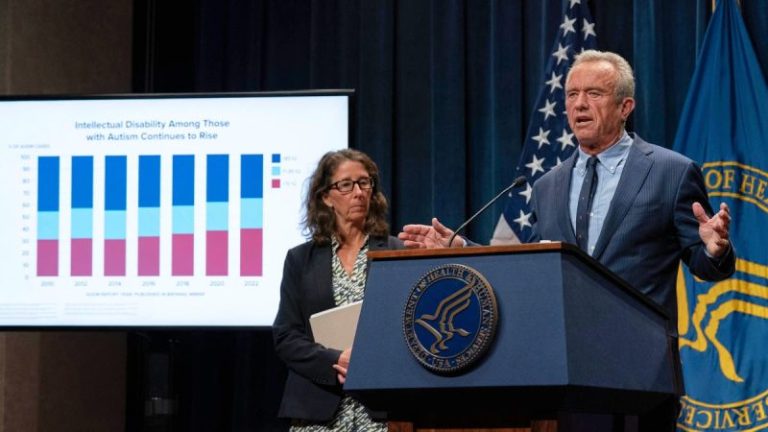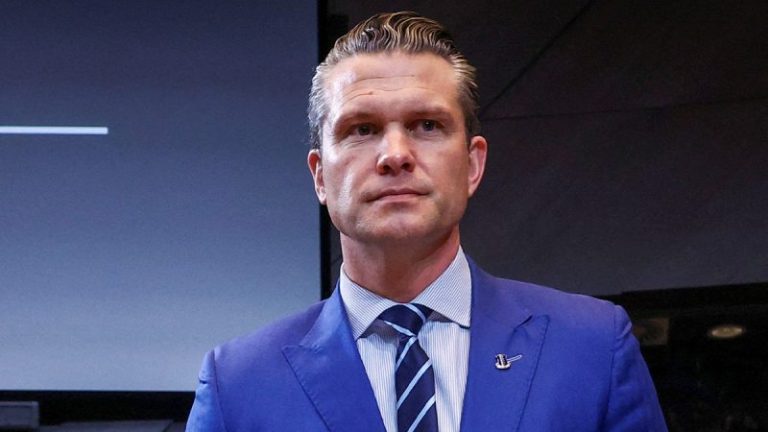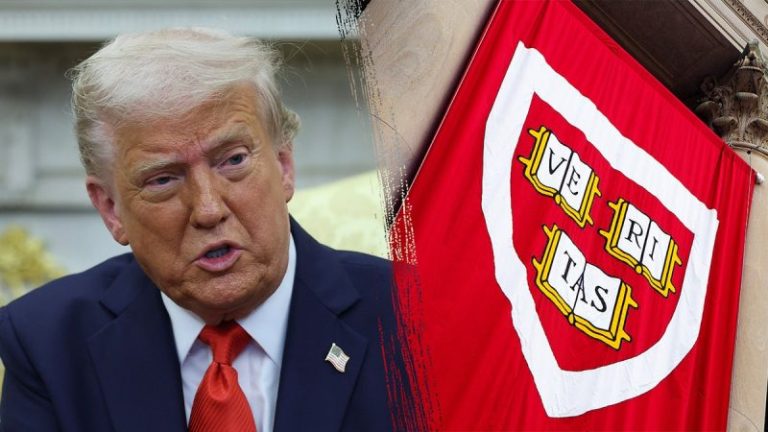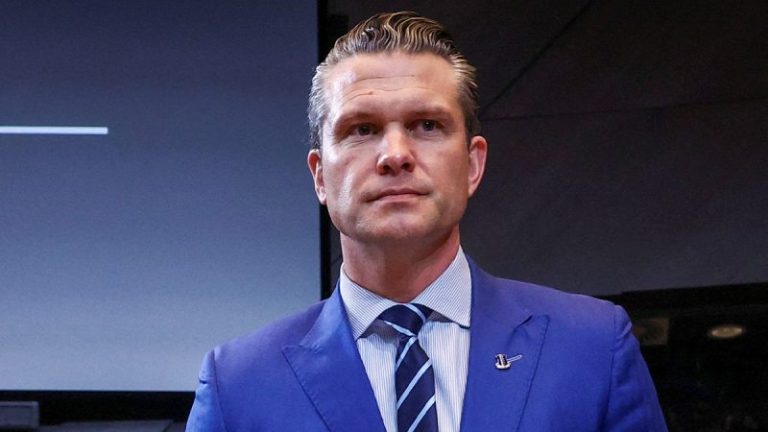A former Albanian ambassador to the U.S. says the country’s upcoming election will be more like a runoff between the policies of President Trump and George and Alex Soros as opposition parties call foul over corruption by the ruling socialists.
‘Albania is now effectively a one-party system pretending to hold elections,’ Agim Nesho, former Albanian ambassador to the United States and the United Nations, told Fox News Digital. Nesho said May’s election ‘is a clash between ‘Trump-ists’ and ‘Soros-ists,’ with the latter fighting to keep their grip on corruption and the state in Albania.’
Amid accusations of corruption and the recent arrests of major Albanian political candidates, some critics are voicing concern over the integrity of upcoming elections for the country’s 140-member Parliament, now scheduled for May 11.
Nesho claimed the country’s ruling socialists ‘led by Prime Minister Edi Rama, is undemocratic and deeply rooted… for over 12 years, it has been supported by rich left-wing donors like Alex Soros, Rama’s close friend, and by projects like the USAID and Open Society [Foundations] judicial reform, which Rama co-opted and twisted to attack the center-right, conservative opposition.’ He claimed the prime minister ‘also oversees a powerful narco-state that spreads fear and exerts controls over elections.’
President Trump’s former campaign manager, Chris LaCivita, joined the campaign of Sali Berisha, the leader of Albania’s right-wing Democratic Party in February, according to Politico. LaCivita told the publication that Berisha would be ‘a true friend of the United States and… will successfully work with President Trump and the United States.’ He called Rama a ‘puppet of George Soros.’
Berisha, formerly president and prime minister of Albania, told Fox News Digital that Rama’s government ‘banned my name and the name of the party in the voting list’ during May 2023 elections. ‘When they failed with these measures,’ he said they went further.
Parliament stripped Berisha’s legal immunity in December 2023 and placed him on house arrest under the accusation that he had used his position to help his son-in-law acquire private land. Berisha says that ‘official documents proved’ the land belonged to his son-in-law’s grandfather, and had been confiscated by the former Communist regime.
Last November Berisha was released from house arrest. He was formally charged with corruption in September, the Associated Press reported.
Berisha’s spokesperson, Alfred Lela, told Fox News Digital that Berisha is now awaiting trial.
In addition to Berisha, Centrist Freedom Party leader and former Albanian President Ilir Meta was arrested on corruption charges in October 2024 in what one source told Fox News Digital was a ‘weaponization of the judiciary and law enforcement agencies.’ Once an ally of Rama, Meta has frequently noted the increasing corruption and authoritarianism of the Rama government.
George Soros’ Open Society Foundations (OSF) has invested more than $131 million in Albania between 1992 and 2020, effectively ‘supporting Mr. Rama’s rise to power,’ the European Center for Law & Justice reported in 2023. The center alleges that OSF helped to allocate some of the $60 million that USAID spent on judicial reform in Albania between 2000 and 2015, explaining that Rama’s opposition has ‘denounced this reform as aimed at enabling the government to take control of the judiciary.’
OSF offices in Albania and the U.S. did not respond to numerous inquiries from Fox News Digital about allegations placed by its opponents against it.
According to an OSF website, the group has ‘earmarked $600,000 to support the process to overhaul Albania’s judicial system’ in 2015 as part of Albania’s preparations to join the European Union. OSF claims ‘the money was used to fund a 20-strong expert panel, conduct public outreach and opinion surveys, establish a dedicated website, and organize conferences.’
NewsNation reported that Alex Soros often travels to Tirana, and calls it his ‘second home.’ In July 2021, Soros posted a selfie with Rama on Instagram, identifying the prime minister as his ‘good friend.’
Berisha says he asked eight years ago for the U.S. Congress and European Parliament ‘to ban [George] Soros’ political activity in Europe because he is an enemy of democracy.’
In a December speech, Berisha said he would ban the OSF from Albania, calling the group a ‘real national threat,’ according to Euronews Albania. Berisha said the Rama government’s mismanagement of resources and failure to mitigate poverty had forced the emigration of 45% of Albanians.
Another impediment to Berisha’s run is the sanctions that former Secretary of State Antony Blinken announced against Berisha, his wife, and his children in May 2021. Blinken said Berisha had been ‘involved in corrupt acts, such as misappropriation of public funds and interfering with public processes, including using his power for his own benefit and to enrich his political allies and his family members at the expense of the Albanian public’s confidence in their government institutions and public officials.’
Berisha claimed that the sanctions against him were ‘entirely based on corrupted lobbying’ by George Soros and Rama. He also said members of the Biden administration ‘turned [the] U.S. Embassy in Tirana into a huge prosecutorial office,’ urging supporters, journalists and business people to stop supporting Berisha and his party, and that the State Department ‘asked other countries to sanction and to isolate me.’
Berisha said sanctions have hindered his campaign. ‘Of course it hurts me, because I’m not able to meet with Albanian Americans, which are so numerous, and in this election, for the first time, they have the right to vote for the party and candidate they prefer in their country of origin.’
A State Department spokesperson said they had no comment about Berisha’s claims that U.S. entities turned supporters against him. The State Department did not respond to questions from Fox News Digital about whether sanctions against Berisha should be upheld, or if they impede free and fair elections in Albania.
A spokesperson for former President Joe Biden did not respond to questions on whether his administration had a role in turning supporters against Berisha.
Nesho noted that sanctions ‘lack… evidence and had been rejected by Albanian public opinion. It looks like a political move, driven by Rama’s big money allies such as Alex Soros, who benefit both commercially and in influence from keeping Rama in power.’ Nesho called on the Trump administration to ‘lift this ban immediately. It’s stirring anti-American feelings and clashes with the values of democracy and fairness,’ he added.
Nesho claimed that ‘the last three elections were unfair, full of intimidation and theft. The upcoming May 11, 2025, election shouldn’t just be a fake show – it needs to be truly free and fair. The U.S. and EU must push for this or ask that the vote is delayed until it can meet proper standards.’
Fox News Digital also reached out multiple times to Albanian Prime Minister Rama, the OSF, a member of the Albanian Foreign Ministry, and the Albanian Embassy in Washington, D.C., for comment about accusations of corruption and OSF election interference but received no response.










